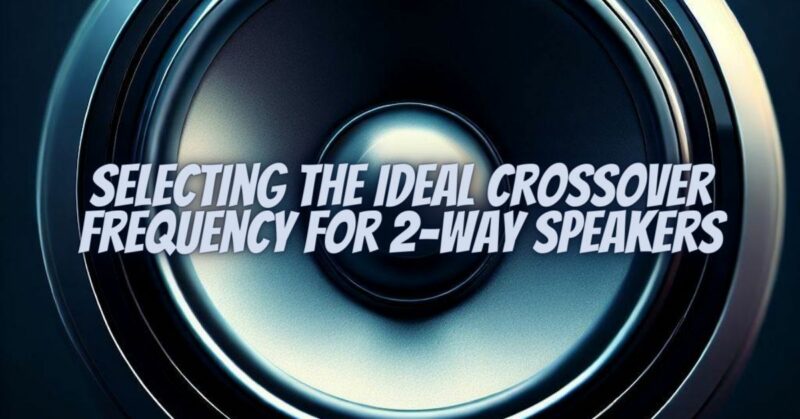Choosing the right crossover frequency for your 2-way speakers is crucial to achieving optimal audio performance. The crossover frequency determines how sound is divided between the speaker’s drivers, ensuring that each driver reproduces the frequencies it excels at. In this article, we will delve into the importance of selecting the ideal crossover frequency for 2-way speakers and guide you through the process to help you make informed decisions when setting up your audio system.
Understanding 2-Way Speakers
2-way speakers are a common configuration in audio systems, consisting of two main drivers:
- Woofer: The larger driver responsible for reproducing low to midrange frequencies. It handles bass and midrange sounds.
- Tweeter: The smaller driver designed for high-frequency reproduction. It handles treble and high-frequency sounds.
The Role of the Crossover Frequency
The crossover frequency is the point at which the audio signal is split between the woofer and tweeter. It is typically measured in Hertz (Hz). The primary functions of the crossover frequency are:
- Dividing Frequencies: The crossover ensures that low-frequency content is directed to the woofer and high-frequency content to the tweeter. This specialization allows each driver to operate within its optimal frequency range, improving sound quality.
- Avoiding Driver Overload: Without a crossover, the full audio spectrum would be sent to both drivers, potentially causing distortion or damage, especially to the tweeter, which is not designed to handle low frequencies.
Choosing the Ideal Crossover Frequency
Selecting the ideal crossover frequency for your 2-way speakers requires consideration of several factors:
- Driver Capabilities: Understand the frequency response capabilities of your woofer and tweeter. Check the manufacturer’s specifications to determine their recommended operating ranges.
- Room Acoustics: The characteristics of your listening room can influence the choice of crossover frequency. For rooms with poor acoustics, a lower crossover point may help mitigate problems like resonance or standing waves.
- Listening Preferences: Consider your listening preferences and the type of content you enjoy. If you prefer deep, impactful bass, you may opt for a lower crossover frequency. For greater clarity and detail in high-frequency sounds, a higher crossover point might be suitable.
- Speaker Design: Some 2-way speakers are designed with fixed crossovers, while others allow you to adjust the crossover frequency. If you have adjustable crossovers, experiment with different settings to find the one that best suits your preferences.
- Matching with Subwoofers: If you are using subwoofers in your audio system, coordinate the crossover frequency between the 2-way speakers and the subwoofer to ensure a seamless blend of bass frequencies.
Common Crossover Frequencies
Common crossover frequencies for 2-way speakers range from around 1,500 Hz to 3,000 Hz, but there is no one-size-fits-all answer. Here are some general guidelines:
- Low Crossover (1,500 Hz – 2,000 Hz): This setting directs more midrange frequencies to the tweeter, potentially providing greater detail in vocals and instruments. It’s often used for audiophile setups.
- Midrange Crossover (2,000 Hz – 2,500 Hz): Strikes a balance between low and high crossovers, suitable for most music genres and audio systems.
- High Crossover (2,500 Hz – 3,000 Hz): This setting directs more high-frequency content to the tweeter, potentially enhancing clarity and brightness in audio.
Selecting the ideal crossover frequency for your 2-way speakers is a critical step in optimizing your audio system. By considering factors like driver capabilities, room acoustics, listening preferences, speaker design, and subwoofer integration, you can fine-tune your system to deliver the best possible sound quality. Experimentation and careful adjustment of the crossover frequency will ultimately allow you to enjoy music, movies, and other audio content with enhanced clarity, balance, and precision.

